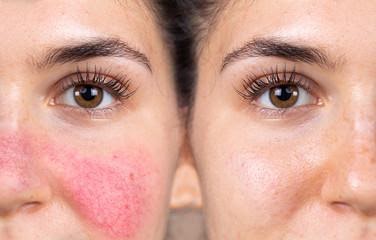
With all the skincare products out there, making your products stand out from the rest can be challenging. It’s crucial that you target the right audience for the products you provide. The good news is that 80% of consumers are willing to try something better, even if they’re satisfied with what they already use for skincare.
One of the best ways to advertise your skincare products is to share content that speaks to your current and future customers’ problems and concerns.
In this article, we’ll share five skincare advertising tips and techniques that will enable you to effectively reach your target audience, resulting in more sales. These tips include:
- Create a content calendar
- Post real before and after photos
- Avoid using filters or doctored images
- Provide valuable skincare tips
- Use video in your posts
1. Create a content calendar
Advertising haphazardly here and there probably won’t get you the numbers needed to reach your business’s financial goals. Online consumers usually have to see numerous posts before making a purchase, which is why you’ll need to keep that content coming. Sometimes they’ll see an advertisement that piques their interest, but it pops up at a time when they’re too busy to act on it. They’re likely to go on about their day and forget all about the product.
Be consistent
Posting consistently will help keep your brand at the forefront of customers’ minds, but be careful not to bore them with too much of the same stuff. Ideally, your advertising will be a mix of different types of content.
Producing a variety of content regularly can be a full-time job, but it’s doable if you make it part of your routine. As with anything in life, consistency is key, but how can you develop new skincare content every day for your blog and social media accounts? The answer is by planning and scheduling posts ahead of time using a content calendar.
What is a content calendar?
A content calendar is a written schedule for publishing upcoming content. Some platforms such as Facebook allow you to preschedule your posts, but a content calendar will also help you keep track of when to publish content manually.
The main benefit of using a content calendar is that it helps you stay organized, enabling you to rotate the content you publish and even repurpose previously published material. By keeping track of when you posted something, you’ll know when it’s been long enough to repackage it and use it in another post — after making a few tweaks, of course.
2. Post real before and after photos

One of the best ways to build trust is to use before and after pictures of yourself or real customers who have achieved the desired outcome by using your products. Illustrating the results on real people will help your target audience realize that they, too, can experience amazing results using your product.
Limit the use of professional model photos for product release announcements and other promotional posts. Although the striking images might initially get people’s attention, today’s buyers are savvy and want to determine whether a product actually works before buying it. Most of your examples should come from real, everyday people — like you and your customers.
3. Avoid using filters or doctored photos

Another way to build confidence in your products is by using unfiltered, undoctored images. Your product works, and your audience needs to see you demonstrate that fact without appearing dishonest.
One of the challenges with before and after photos is inconsistent lighting. For example, you have a customer whose fine lines and wrinkles have diminished, but you accidentally took the after picture at a different time of day or used different lighting than with the before picture. Savvy consumers will notice that the subject’s skin appears to be a slightly different color in one of the photos and wonder if special lighting was used to blur out the wrinkles.
Having consistent lighting can be a challenge when photos are taken weeks apart, so you’ll need to work hard to eliminate possible variables. The best way to do this is to avoid using natural light for before and afters since it’s easier to duplicate artificial lighting.
4. Provide valuable skincare tips
One of the most effective practices in online marketing is providing value. If all of your content is purely sales-driven, people will start to tune you out. Teach them how to care for their skin, and use your products to do it. Show, don’t tell, and you’ll be getting your products in front of your audience.
People will come for the tips, and a percentage of them will convert into customers. For example, you could do a tutorial about the order in which they should use moisturizer, serum, and toner. They’ll come for the information, and many will end up making a purchase. Bonus points if your content is entertaining, which will help you develop a loyal following.
5. Use video in your posts
People are bombarded with advertisements for beauty products, so you’ll need to find a way to stand out from the noise. What kind of content will get you more views and engagement? The answer is video.
A recent survey found that videos on landing pages increase conversions by up to 86%. Clearly, consumers are influenced by online videos, yet some skincare marketers still aren’t using it as part of their content strategy. Here are some of the reasons why savvy marketers use video:
- Google prioritizes content that includes video.
- Mobile users often prefer video content.
- On average, video offers a 50% higher return on investment than TV ads.
- Video tends to build more trust since photos can easily be manipulated.
Consider making high-speed DIY tutorial videos
Video is more engaging and effective than still photos, but it can be challenging to keep people engaged long enough to get through your video. Modern technology has gotten people used to clicking or swiping away within seconds. With today’s shortened attention spans, a sped-up video showing how to do a skincare regimen may be all some people have time for on a busy day.
There are several applications you can use to speed up your demonstration easily. When it comes to skincare tutorials, a sped-up video can demonstrate the process just as well as a real-time one. Ideally, you’ll use a mix of both real-time and time-lapse videos in your digital marketing campaigns because longer watch times can impress the algorithms of platforms such as YouTube.
One side benefit of speeding up videos is that you won’t include the original sound. Since you’ll be adding music and captions, you won’t need a quiet environment while recording the video. This is particularly advantageous if you’re working from home with kids in the house.
Final thoughts
Equipped with the above tips for effective skincare advertising, you can craft a marketing schedule that builds trust and holds your audience’s attention while showcasing your products. For more information on marketing in the personal care industry, read our marketing guide for salons and spas, The Download.




